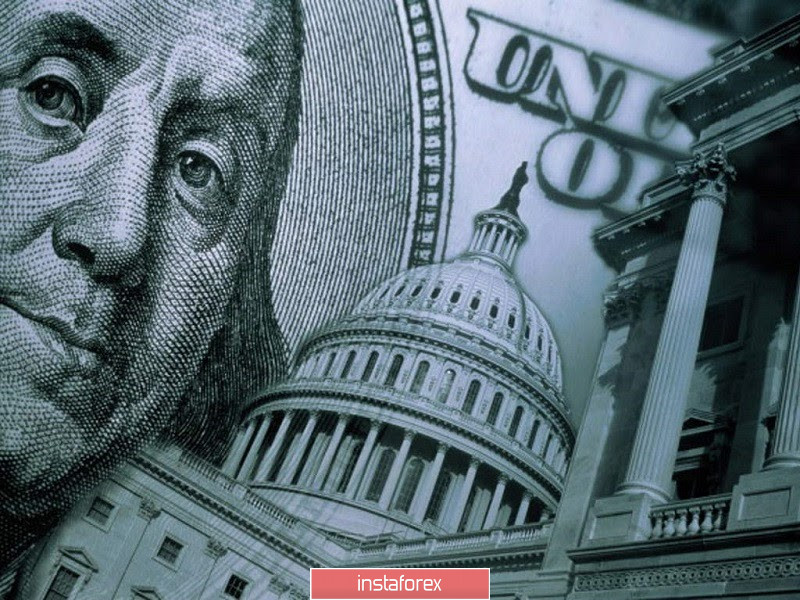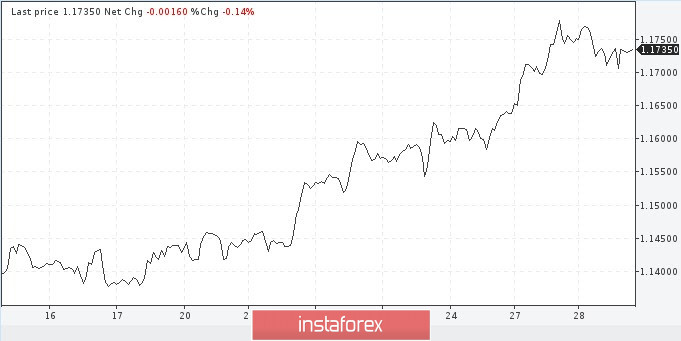
The dollar has been falling since May, the decline took on a threatening momentum yesterday. As a rule, sharp and strong movements are accompanied by a correction, which happened on Tuesday. The US currency has rebounded from 2-year lows, however, the reasons why it has been declining until today have not gone away.
It is too early to talk about the reversal of the tendency. The medium-term trend, like the long-term one, is still downward, so there is no need to rush into purchases. We need to wait for a confident consolidation above the 93.75 level, where the line of the medium-term downward trend passes. The dollar fell by 3.6% in July. In order for it to be able to avoid the worst month in a decade, it needs not just a correction, but a rather crucial rise.
USDX

The dollar correction is probably related to the upcoming events this week: the adoption of a new package of stimulus measures for the US economy and the Federal Reserve meeting on the rate. Both factors are unpredictable, so they can make the game against the dollar more tense.
Investors do not expect the central bank to respond with changes in monetary policy on Wednesday, but the rhetoric may well be dovish. Markets expect to hear confirmation of the central bank's forecast for the most lenient monetary policy and allow for a change in the focus on the future.
It is possible to average inflation targeting. The Fed will push inflation above the 2 percent target and thus make up for years of missing the target.
The rise in nominal yields, which pushed the 10-year yield to a weekly peak of 0.63%, suggests that investors can "sell the fact" even if Fed Chairman Jerome Powell's rhetoric seems "soft" to them.
The US central bank may well present some kind of surprise, so a positive reaction from the dollar cannot be ruled out, although this is unlikely. The main drivers - the weak recovery of the US economy and the policy of financial officials - indicate a bearish trend forming on the dollar.
Recall that a weaker dollar makes US exports more competitive overseas. In addition, it helps multinational companies by making it more attractive for them to convert profits back into the national currency. This is good news for the rally in the US stock market, which has now slowed down.
Meanwhile, a weaker dollar could bring little short-term political gain to US President Donald Trump, who is seeking a second term in office. Trump said the currency's perennial rally is hurting American manufacturers. In order to "feed" this sector, it will take at least a year of dollar weakening. It's too long and the elections are in November.
A further decline in the dollar will be an undesirable event for Japan and European countries. Their national currencies will grow, threatening the pace of economic growth recovery and efforts to stimulate inflation.
The euro has already set its sights on conquering the 1.1800 mark in conjunction with the dollar, although there was a slight correction on Tuesday after a new resistance level of 1.1668–1.1680 had formed. However, the fall was on a small volume, and the euro exchange rate is still around highs. It is unlikely that anyone will dare to deny the existence of a strong local upward trend in the European currency, so preference should still be given to long positions.
EUR/USD

 English
English 
 Русский
Русский Bahasa Indonesia
Bahasa Indonesia Bahasa Malay
Bahasa Malay ไทย
ไทย Español
Español Deutsch
Deutsch Български
Български Français
Français Tiếng Việt
Tiếng Việt 中文
中文 বাংলা
বাংলা हिन्दी
हिन्दी Čeština
Čeština Українська
Українська Română
Română

